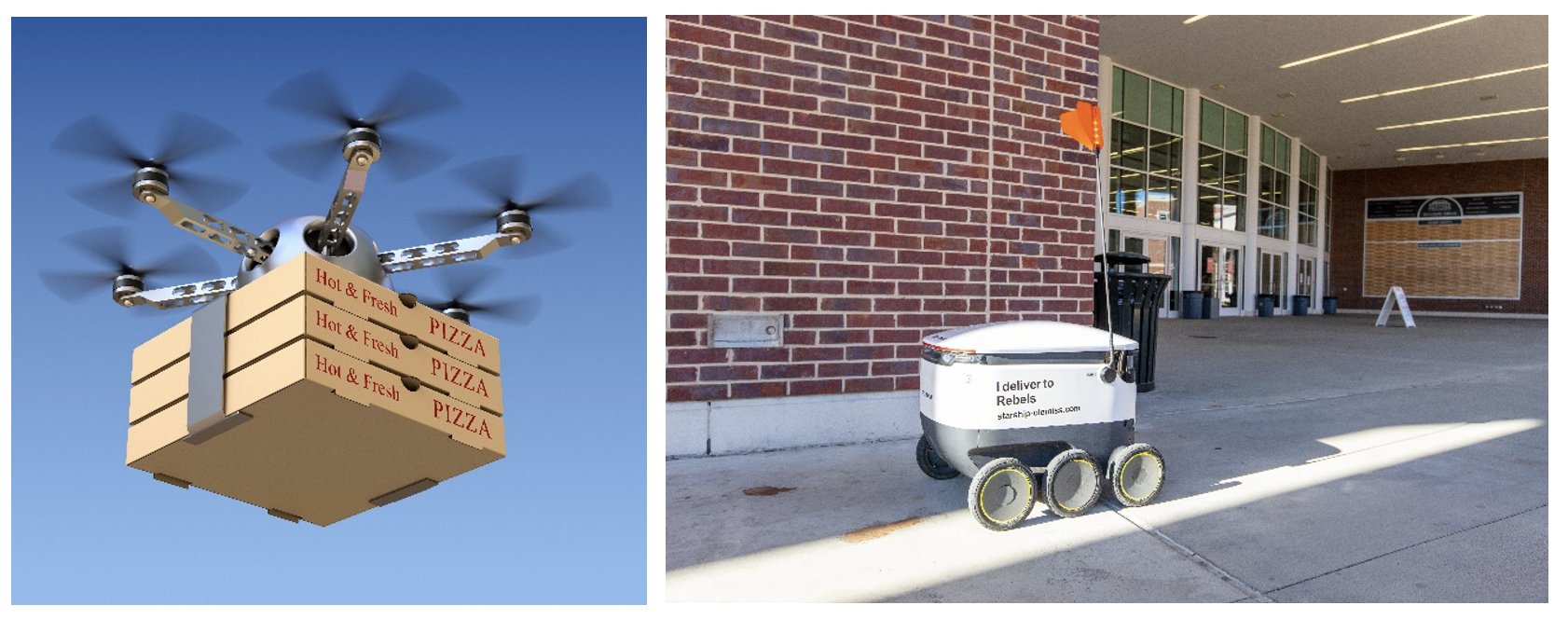“The future is already here, it’s just not evenly distributed.” As a tech enthusiast, entrepreneur, and investor, I live this temporal disjuncture every day. I am privileged to see technologies when they are in their infancy. It allows me to be able to make accurate predictions of how the world is going to play out. In other words, I live in your future. While my predictions have mostly come true, I have been spectacularly wrong about the speed of technological adoption and disruption. I have repeatedly overestimated how quickly we adopt technology.
Timing matters tremendously. Companies like Pets.com, an online retailer of pet food and accessories, and Webvan, an online grocer, failed spectacularly during the dot com bubble. Ironically, 20 years later companies offering similar products like Chewy.com and Instacart are doing very well. The ideas were sound. However, the market was lacking a lot of the infrastructure, technologies, and demand to make them viable at the time. The same is true for many ideas that failed in the dot com bust but are now successful: video streaming, online gaming, local delivery, and countless others.
I observed countless such temporal gaps. The graphic interface and mouse were invented in the 1960s but were only popularized by the Apple Macintosh in 1984. You can see an image of Douglas Engelbart’s prototype mouse from 1964 below.

In the 1980s I was playing with my PC in France and connecting to Bulletin Board Services via modem while the rest of France was using the Minitel. In the early 1990s at Princeton, I was privileged to have high speed Internet directly in my dorm room while the world was connecting via slow dial-up. In both cases it felt obvious to me that PCs and broadband were the future. That notion faced significant push back. Most argued that they were too complicated and expensive, conveniently ignoring that technology is extremely deflationary and keeps improving and simplifying. I was right; however, it took decades for that vision to play out.

In the early 1990s I told my dad not to invest in AOL because dialup was bound to disappear. Dial-up revenues still accounted for 45% of AOL revenues by 2004! Likewise, I told my dad not to invest in Netflix’s IPO in 2002 because the 50% margin would compress as the switch to broadband would mean they would have to transition into streaming and away from shipping DVDs by post. As result they would have to license content from others and/or produce content, both of which would be a very different business from the one they were in. DVD volumes first fell in 2011 (and they nailed the transition). In both cases I was right, but again a decade off on the timing.

As a busy professional in New York, I never learned to cook and was a very early adopter of Seamless Web in 2005. Loving the convenience and diversity, I made investing in online food delivery marketplaces one of my priorities. FJ Labs now has 83 investments in Foodtech. In 2010, Jose and I invested in Lieferheld, a food delivery company in Germany that ultimately turned into Delivery Hero, a global leader in food delivery. The company went public in 2017. I usually sell my stock in companies when it goes public, but I was so bullish on the future of food delivery that I held my stock. Many people are skeptical, and the market cap of the company has fallen from a high of $30 billion to $10 billion. It is true that today the online food delivery experience is limited and mediocre. You are mostly sold unhealthy fast food, at high prices, with high delivery costs, and delivery times of 30 minutes or more. However, I can imagine a future when the food is made in low-cost ghost kitchens, covering all food allergies and food quality, prepared in less than 3 minutes because it’s optimized for delivery, with low delivery costs thanks to autonomy – be it drones in the suburbs or autonomous delivery vehicles, where the food is delivered in less than 15 minutes. In this world, it makes no sense to cook as it would cost more for you to purchase the groceries and make your meal than to order online, not even taking into consideration the opportunity cost of your time. It might not even make sense for people to have kitchens in cities with expensive real estate like New York. This is not to say that cooking will disappear. Some people love cooking and will continue doing it, but for most it might be relegated to something we do on special occasions. In that world I can see a large part of the $800 billion in grocery sales in the US to move to online food delivery. It’s one of the reasons I remain so bullish on Delivery Hero and food delivery writ large, but it is taking a lot longer to play out than I expected.

In 2012, I had the opportunity to invest in Uber at a $2 billion valuation. While evaluating the investment I worried that self-driving cars would eliminate their moat of having a critical mass of drivers. We are now over a decade later and self-driving cars are still not common. I’ve witnessed electric self-flying vertical take-off and landing (VTOL) aircraft fly successfully. I profitably invested in Archer early in its journey, yet commercial flights are still years away. In both cases they seem inevitable, albeit still far away from reality.

In the past few years, I’ve witnessed wonderful advances in technology. At a mental health conference, I observed a paraplegic who, through hundreds of electrodes implanted in his brain, could control his wheelchair, his artificial arm and could even perceive touch, pressure, and temperature. A patient with locked-in syndrome was able to have full blown conversations with his wife purely through his thoughts. The software even deciphered a made-up word they only used between them.
Considering this, it’s not hard to imagine a world where we are no longer hunched over our cell phones, looking at a small screen, typing at limited speeds, but instead use our thoughts to control a device whose display is overlayed on our field of vision through intelligent contact lenses or glasses that have lasers writing on our retinas. In this world, the digital will blend seamlessly into the real world. We will have technologically enabled telepathy, automatic recognition of people we meet with a summary of our past encounters and the names of their spouses and children. We will access whatever information we need seamlessly. This will represent a fundamental platform shift and it’s not obvious that the legacy smartphone winners, Apple, Google and Samsung would be the winners in this new world. This will disrupt a multi-trillion-dollar industry.
I can’t wait for this world to be upon us, but I suspect we are over a decade away from realizing that vision. It’s unclear whether we will be able to achieve the same success in mind reading absent “wetware” or surgically implanting electrodes on our brains. It will take time for people to get comfortable with the idea of doing that. Likewise intelligent contact lenses and glasses with lasers writing on our retinas are in their infancy. This future is inevitable, yet far away.
Solar costs and battery have declined so rapidly it’s easy to imagine a wonderful future with no greenhouse gas emissions coming from energy production, currently 25% of global greenhouse gas emissions, powering electric cars and trucks, currently representing 14% of global greenhouse gas emissions.
Solar is now the cheapest form of electricity production.

It’s declining in price faster than even the most optimistic projections allowed for.

The cost of batteries, measured in dollars per kWh stored, has fallen by a factor of 42 since 1991 and by a factor of 2.5 since 2010.

In 2021, solar power accounted for 3.6% of global electricity generation and electric cars accounted for 14% of new car sales. Given how humans are bad at understanding exponential growth, I believe that by 2030 most car sales will be electric and 15% of energy production will be solar, making me way more optimistic than current forecasts, but I can also see how it might take a decade longer 🙂
I suspect something similar is happening with AI which seems to be near the peak of its hype cycle. Everyone in my little tech echo chamber is worried about tech disrupting their industry. Chat GPT is the fastest product in history to reach 100 million users.

Many of the interactions are magical and I use them daily. You should definitely try the following products:
- Chat GPT4 (now available on iOS) and Bard are amazing for research, conversations, and written creative endeavors. Remember that they are meant to be creative and will invent or “hallucinate” a lot of answers so be very careful what you use them for. The genius is in the prompts you enter. Make sure to check the results.
- Tome and Beautiful help you make presentations quickly.
- DALL-E2 and Midjourney create art and images from text. Midjourney is more sophisticated but requires using Discord and specific syntax.
- Runway produces video from text which was used by Oscars Best Picture winner Everything Everywhere All At Once.
- Galileo generates graphic designs editable in Figma based on text prompts.
- Khanmigo is a tutoring AI that uses the Socratic method of verifying that kids understand the concepts they are being taught rather than just giving them the answer.
- NFX published a more exhaustive list of the top 75 generative AI startups that cover many other use cases.
The tools are useful today. I used Bard, Chat GPT, Tome, and Midjourney to create various elements of this blog post, but the tools are far from perfect. They give you elements and starting points but require significant edits and work. I would say the tools are 70% of the way there, but they definitely increase your productivity.
While this is great for consumers and fast-moving startups, I suspect it will take years and possibly a decade for generative AI to really revolutionize most industries. What would it take for you to be willing to trust a medical diagnostic from AI? In mission critical environments, errors can be catastrophic and it’s going to take a lot more effort to make sure they are 99% accurate, let alone 99.99999% accurate and 80/20 rule on effort very much applies.
It’s one of the reasons we are not investing in generalist generative AI startups. They have no real moat, countless competitors, and uncertain business models, not to mention insane valuations driven by all the hype. This reminds me of the early years of search engines where Alta Vista, Excite and others were duking it out. Google won despite being very late to the party. The same thing happened in social networks with Friendster, Tagged, Hi5, MySpace and countless others competing until Facebook took over.
We are way more interested in vertical applications of AI using proprietary data, providing pickets and shovels to the AI arms race, or simply marketplaces using AI to improve their user experiences with personalized product recommendations, automated fraud prevention, dynamic pricing, automated product descriptions and automated customer service.
Here are a few examples from our portfolio:
- SuperFocus creates LLM AI’s using enterprises’ private data, stored securely in a separate memory module outside of the LLM, to stop hallucination.
- Anduril creates autonomous systems that provide persistent awareness and security across land, sea, and air.
- Numerai is a hedge fund that predicts the stock market using AI.
- Proper is an AI powered property management software.
- Photoroom creates the best background for your photo to increase sell through rate online.
- The handbag marketplace Rebag uses its AI, Clair, to identify the handbag, give you its history, and give you its value. You basically take one photo, and you are done. Compare that to the complexity of selling on a site like eBay where you need to take lots of photos, write a title and a description, select a category, and set a price in the hope of selling the item.
Regardless of the timing, I am beyond excited for the potential of AI. It’s about to unleash a wave of growth unto the world as everyone will become significantly more productive. Moreover, it will fundamentally democratize startup creation by virtually eliminating both the cost and technical requirements of software creation. This will let loose a massive wave of innovation as people from all walks of life, educational background, and geographies, who heretofore could not join the startup revolution will unleash their creativity unto the world.
I am not sure if there is a real takeaway or “so what” from this blog post. It’s an observation that, like many other technologists I know (the amazing Gary Lauder made a similar assertion recently which truly resonated), I am rather good at predicting how the future of technology will play out. However, because I can easily imagine this future, I believe it will happen very soon, while culture and institutions move slowly, and things end up playing out over decades. As a friend told me: “entrepreneurs confuse the present with the future. Their conception of it is so realistic that they often think they’re already there.” Perhaps as my thoughts on AI are highlighting, I am now correcting for that in my investing behavior, if not in my fundamental optimism.
I don’t know how long it’s going to take for all the things I laid out to play out: high quality food delivered in 15 minutes at your doorstep for less than you can buy it at the grocery store, self-driving vehicles, VOTL aircraft, the advent of mind reading and augmented reality (AR), the greening of the electricity grid and our transportation system, and a wonderful explosion in productivity and human creativity due to AI. However, I take comfort in the knowledge that it will happen. I cannot wait for that day to come and am beyond excited for the future we are building!


